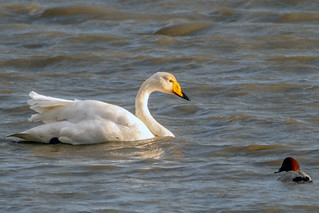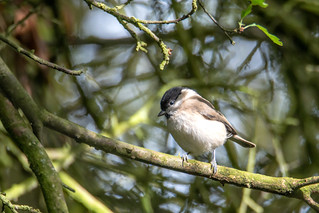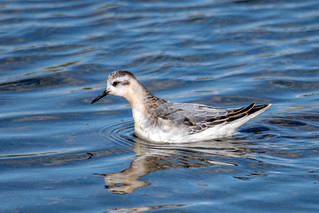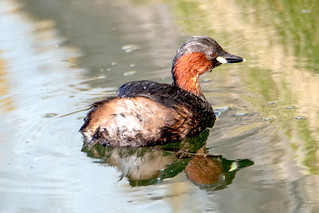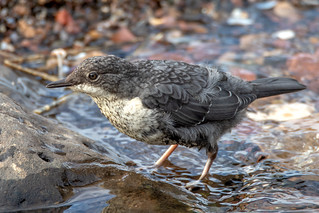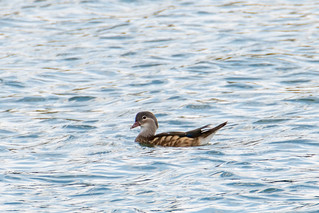A few days away in Suffolk and so it would be rude not to visit RSPB Minsmere. It had been a bit wet as we set off but by the time we arrived the sun was out, although it was cold. We had a spot of lunch and then set out onto the reserve.
 At the crossroads Charlotte convinced me that we should go over to the Bittern and Island Mere hides to see if we could see a bittern; there might also be an outside chance of a bearded tit. The Bittern hide showed very little and the reeds in the pool were in need of a trim. A young family entered and noisily discussed looking for unicorns. After some time we decided that we would retreat to Island Mere. As we passed the hill on our right we saw a jay fly past, but nothing else caught our eye.
At the crossroads Charlotte convinced me that we should go over to the Bittern and Island Mere hides to see if we could see a bittern; there might also be an outside chance of a bearded tit. The Bittern hide showed very little and the reeds in the pool were in need of a trim. A young family entered and noisily discussed looking for unicorns. After some time we decided that we would retreat to Island Mere. As we passed the hill on our right we saw a jay fly past, but nothing else caught our eye.
No sign of bearded tit from the boardwalk into Island Mere but the hide was bustling with people. This was for a good reason - a bittern (#144) was  standing fishing in some thinly spaced reeds not far from the hide. It was difficult to get much of a photo from where it sat but we watched as it caught a total of four fish (3 x roach, 1 x perch). We sat / stood for a good while - as we waited we had views of great white egret and marsh harriers as they passed by.
standing fishing in some thinly spaced reeds not far from the hide. It was difficult to get much of a photo from where it sat but we watched as it caught a total of four fish (3 x roach, 1 x perch). We sat / stood for a good while - as we waited we had views of great white egret and marsh harriers as they passed by.
Eventually after two hours the bittern walked a circle round open ground, in failing light, and back into the reeds once more. A great choice by Charlotte! It was getting late and so we headed to our hotel to check in.
The next morning the forecast was for better weather but gradually deteriorating through the day. After a full  English breakfast we returned to the reserve, heading for the sea and the South hide. It was much colder and the wind stronger too. Out to sea we could sea great black-backed gulls and 200+ common scoter. From the South hide we found 5 avocet and an array of ducks. Quite large numbers of great black-backed gull were resting here too.
English breakfast we returned to the reserve, heading for the sea and the South hide. It was much colder and the wind stronger too. Out to sea we could sea great black-backed gulls and 200+ common scoter. From the South hide we found 5 avocet and an array of ducks. Quite large numbers of great black-backed gull were resting here too.
There had been reports of three Dartford warblers along the dunes but they refused to show. While looking around likely habitat a few stonechat spun around in the air catching flies in the more sheltered spots. We saw kestrel and then a muntjac deer as we headed back to the Visitor Centre for lunch.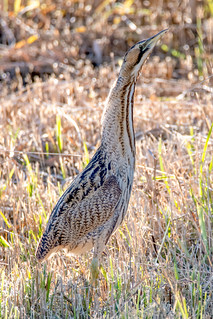
Charlotte popped to the toilet before we went to Island Mere to try our luck with the bittern again. As I waited I had a goldcrest in the trees overhead. Back to the Island Mere hide and we had a repeat performance from the bittern. It was getting on so we decided to leave and had a wander around Snape Maltings and a cream tea.
The next morning we checked out and decided to have another stroll around the reserve. On the entrance road you could see how much rain had fallen overnight. The reserve was damp but not really we or muddy. We headed for the sea again - we saw common scoter again and a gannet far out to sea. Nothing extra at the South hide but we stopped on our way onwards to talk with three guys watching the passage of birds with scopes and bins. They had noted a single velvet scoter and two red-throated divers - unfortunately earlier and not visible now.
As we approached the sluice we came across the stonechats again. As I was trying to get a photo I noticed one of the birds was in fact a Dartford warbler [#145].
It was getting on to lunchtime and we decided to make a last detour to 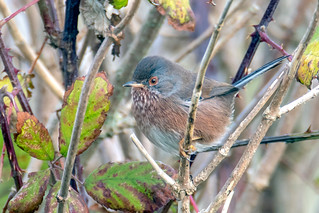 Island Mere for one last bittern encounter. Another great show from the bittern plus the appearance of a single male goosander.
Island Mere for one last bittern encounter. Another great show from the bittern plus the appearance of a single male goosander.
Sunday lunch at the Bell, Middleton finished off our stay. We must try and arrange more of these long weekends - great fun.
Sightings (53) were: avocet, bittern, black-headed gull, black-tailed godwit, blackbird, blue tit, carrion crow, chaffinch, common gull, common scoter, cormorant, dartford warbler, dunnock, fieldfare, gadwall, gannet, goldcrest, goldfinch, goosander, great black-backed gull, great spotted woodpecker, great tit, great white egret, green woodpecker, greenfinch, grey heron, greylag goose, herring gull, jay, kestrel, lapwing, lesser black-backed gull, linnet, little egret, long-tailed tit, magpie, mallard, marsh harrier, meadow pipit, moorhen, mute swan, pheasant, pied wagtail, reed bunting, rook, shelduck, shoveler, snipe, starling, stonechat, teal, wigeon and woodpigeon.








